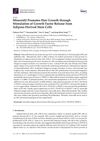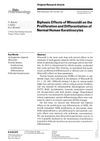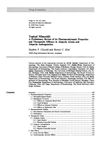TLDR A woman developed a rare scalp condition after starting minoxidil, which was resolved with specific shampoo and solution.
The document presents a unique case of a 47-year-old woman who developed Pityriasis Amiantacea (PA), an uncommon inflammatory scalp condition, after initiating treatment with topical minoxidil 5% foam. PA is characterized by thick, adherent scales that bind to hair follicles, leading to hair matting and alopecia. The patient's symptoms persisted despite stopping the minoxidil and did not respond to topical treatments for scalp infection. She was diagnosed with PA based on clinical examination and history, and was prescribed ketoconazole 2% shampoo and clobetasol solution, which led to complete resolution of her symptoms within a month. This case emphasizes the multifactorial pathogenesis of PA and its potential to appear as a sequela of various conditions, treatments, and environmental factors. Early recognition and treatment of PA can prevent serious alopecic complications.
 42 citations
,
February 2018 in “International Journal of Molecular Sciences”
42 citations
,
February 2018 in “International Journal of Molecular Sciences” Minoxidil boosts hair growth by triggering growth factor release from specific stem cells.
9 citations
,
October 2015 in “Cutaneous and ocular toxicology” Vemurafenib can cause scalp issues but can be managed without changing the dose.
 34 citations
,
January 1997 in “Skin Pharmacology and Physiology”
34 citations
,
January 1997 in “Skin Pharmacology and Physiology” Minoxidil affects cell growth in two ways: low doses increase growth, while high doses slow it down and can be toxic.
 4 citations
,
January 2017 in “Indian Dermatology Online Journal”
4 citations
,
January 2017 in “Indian Dermatology Online Journal” A child used a hair growth lotion for hair loss, but it caused excessive hair growth on his face and neck instead.
4 citations
,
March 1991 in “Dermatitis” Minoxidil can cause skin reactions, so testing is important for those with side effects.
 24 citations
,
February 1987 in “Drugs”
24 citations
,
February 1987 in “Drugs” Minoxidil promotes hair regrowth, but more research needed for effectiveness and response factors.
April 1985 in “Plastic & Reconstructive Surgery” Topical minoxidil can help regrow hair in alopecia areata but is less effective for severe cases.
 16 citations
,
April 1984 in “Archives of Dermatology”
16 citations
,
April 1984 in “Archives of Dermatology” Topical minoxidil can help hair regrowth in alopecia areata patients, but maintaining the growth after stopping treatment is inconsistent.




